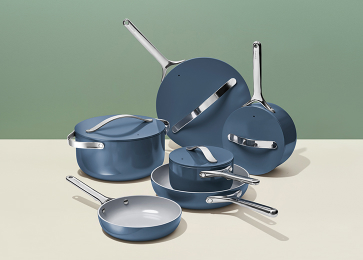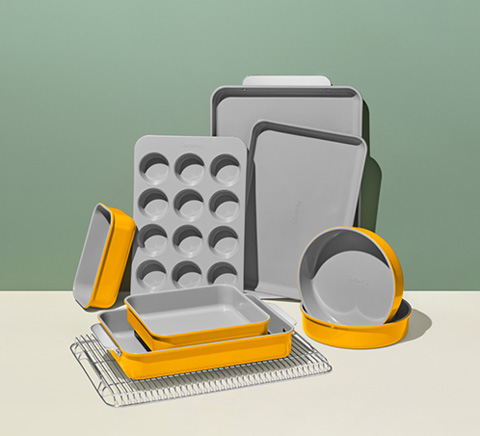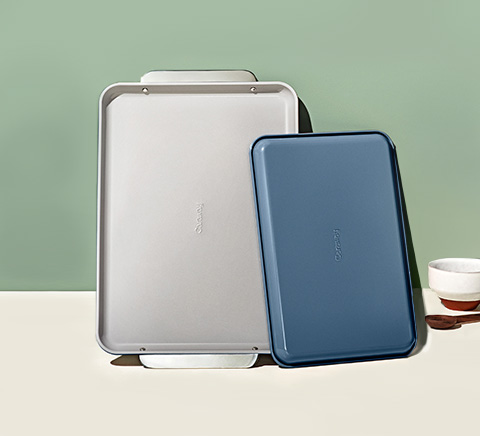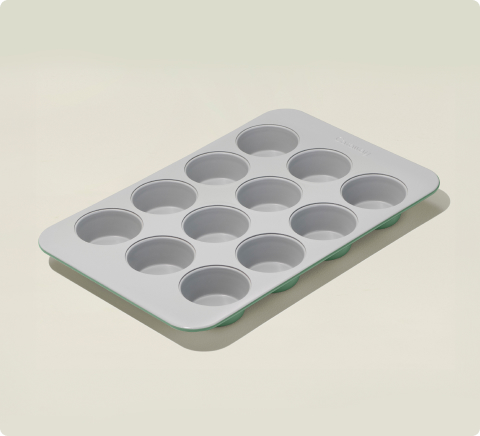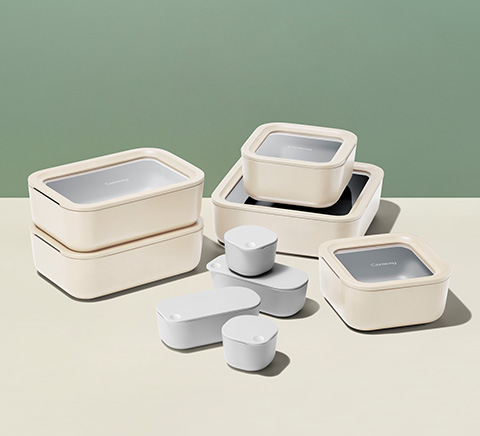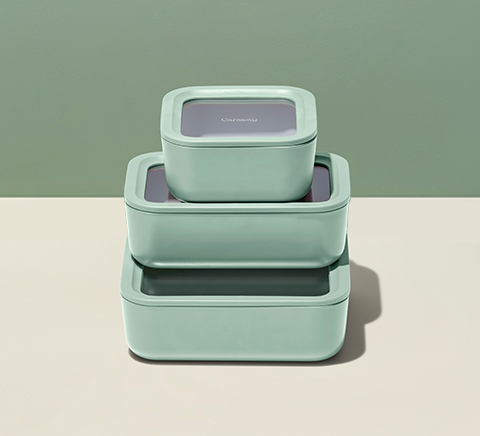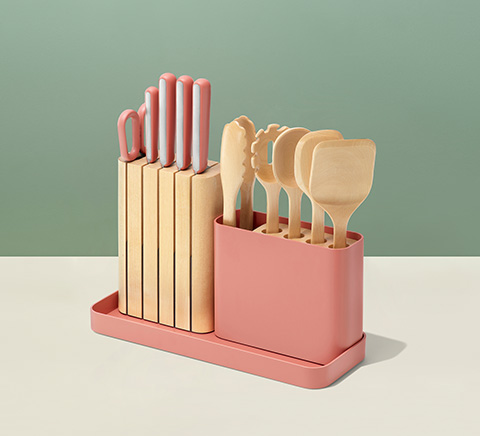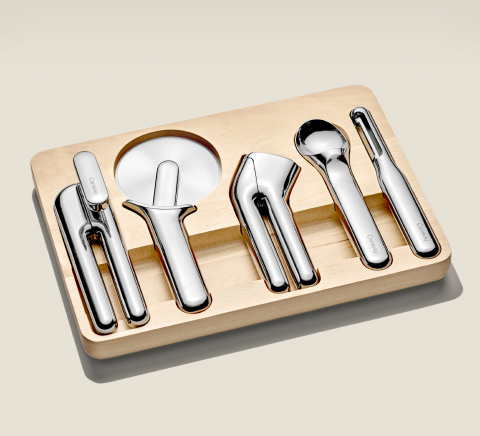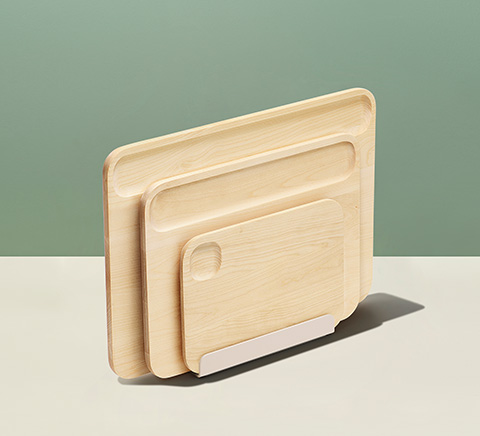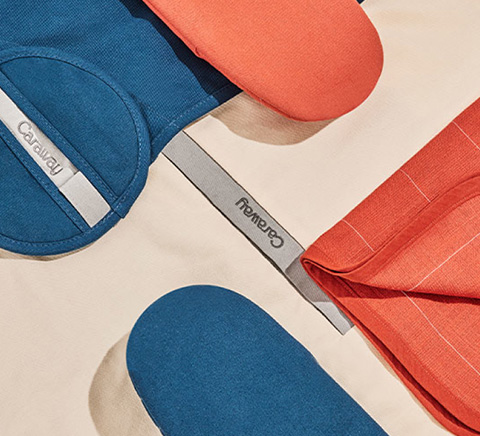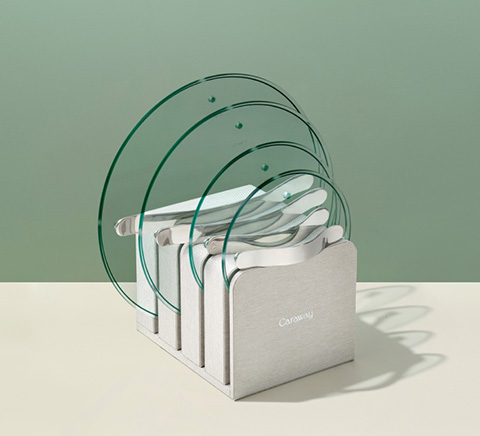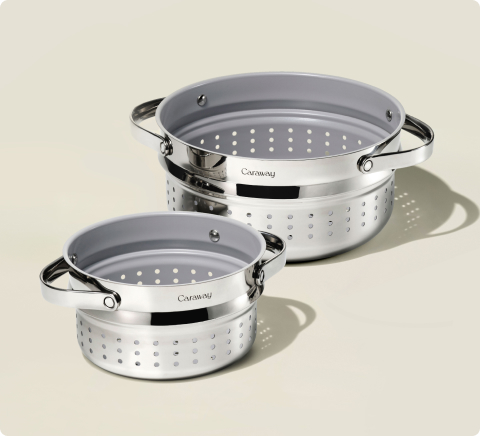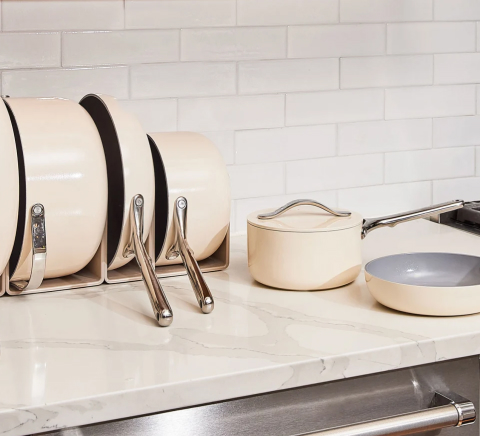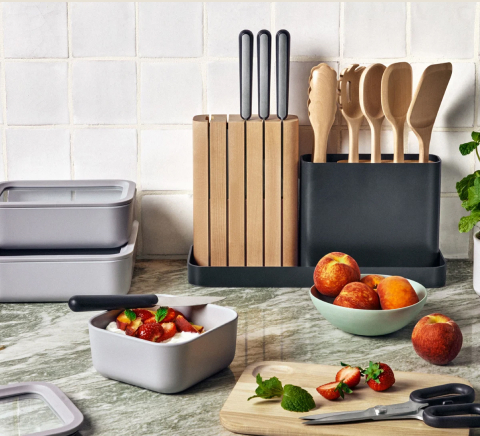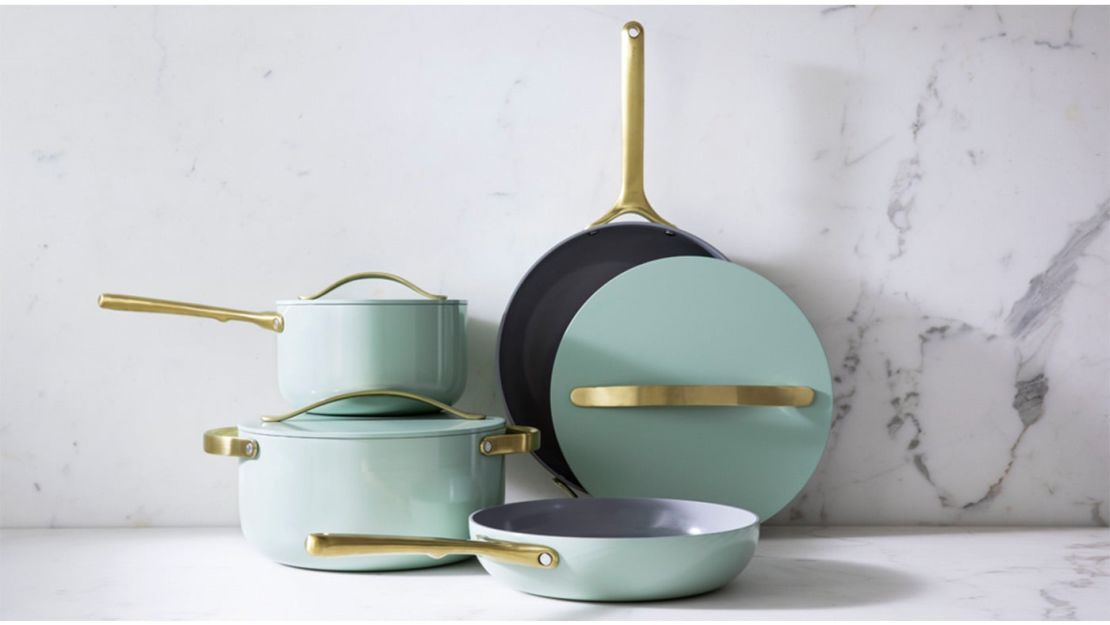Is ceramic cookware safe? What even is non-toxic cookware? Is ceramic cookware a healthier option? What other ceramic cookware pros & cons should be discussed? Learn all about ceramic cooking today!
If you’ve been scrolling through websites looking for new cookware, you may have seen words like “PFOA-free” or “PFA-free” used to describe some of them. These words are often used in reference to ceramic cookware, as they are deemed to be a wonderful type of non-toxic cookware.
But wait—does that mean that there is such a thing as toxic cookware? Absolutely.
Read on to learn more about the safeness of ceramic cookware and why you should switch to non-toxic cookware.
What Is Ceramic Cookware?
First, let’s dive into what ceramic cookware is. This cookware has a ceramic coating, setting it apart from other cookware that has different finishes like cast iron or stainless steel.
Ceramic cookware has gained quite a bit of popularity over the years, especially due to the benefits that come with it. If you take a look at all of our cookware, which is made out of ceramic, you’ll see that their qualities ensure a level of ease in the kitchen that other types of cookware could never provide.
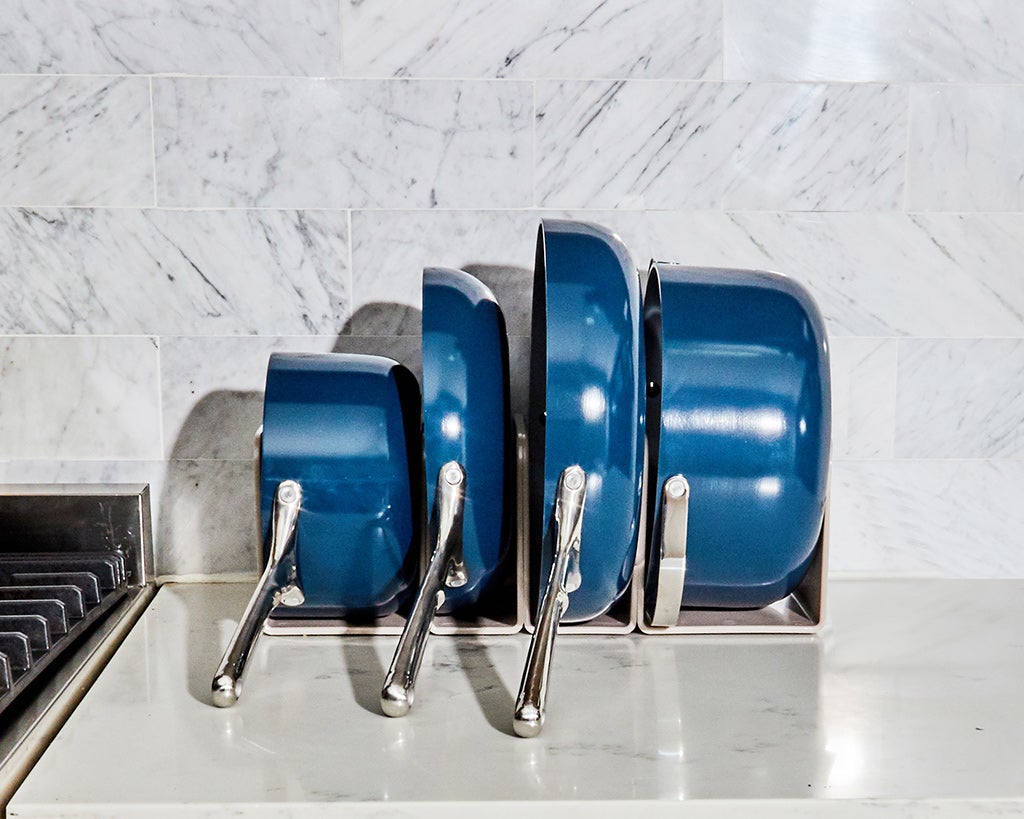
For example, no matter what product you’re using in our Cookware Set, the ceramic coating of the cookware promises completely even cooking. In other words, the material has high conductivity, which makes sure that the surface heats up evenly with no cold spots. Because of this, your food won’t come out unevenly cooked, which can sour everything from a dinner party to a cozy movie night at home.
Our cookware is also extremely versatile, which can help you practice that intentional, minimalist lifestyle. The Cookware Set has four essential pieces that work together to cover every kitchen task.
As an added bonus, they come in a variety of beautiful colors, including Cream, Navy, Sage, Gray, Perracotta, and Marigold. With such vibrant additions to your kitchen, your cookware could even double as kitchen home decor.
The ceramic coating provides a slick cooking surface, which prevents food from getting stuck to it. This is significantly different from traditional “non-stick” cookware; the surface of ceramic cookware is naturally slick and free of toxic chemicals. On the other hand, traditional non-stick cookware is known to have those toxic chemicals in their non-stick coating.
Let’s go in-depth with the toxic chemicals found in these non-stick cookwares and why ceramic is the safer option.
The Issues With Other Cookware
As we mentioned earlier, traditional non-stick cookware achieves its slick surface that we all know and love through the use of materials that hold toxic chemicals.
A popular material that has been used in the past in such non-stick cookware is Teflon. This synthetic chemical is also known as polytetrafluoroethylene (PTFE). Teflon is often used to coat a variety of products, including cookware, due to its frictionless qualities that provide a non-stick surface.
The issue with this material is that it uses perfluorooctanoic acid (PFOA) during its production. This chemical has been linked to numerous health conditions, including cancer, thyroid disorders, and more. Other chemicals, such as per-and polyfluoroalkyl substances (PFAS), are found in this material and can cause similar health issues as PFOA.
When cooking with non-stick cookware that has these chemicals, you run the risk of accidentally ingesting it. This can happen if the coating gets scratched, as it could flake off while in use and get consumed.
Additionally, when Teflon is heated over 570°F, it begins to break down, releasing the toxic chemicals into the air, which can then be consumed.
Is Ceramic Safe?
Ceramic provides a natural non-stick surface without the use of toxic chemicals in its production. The short answer is yes: there is no Teflon used in its production. Ceramic provides a natural non-stick surface without the use of toxic chemicals in its production.
In fact, we take pride in our 100% non-toxic cookware. All of our products are free of PTFE, PFAS, and PFOA, as well as lead, cadmium, and toxic metals. This ensures a healthy cooking experience in more ways than one.
Not only are you avoiding toxic chemicals and the health conditions they are linked to, but you are also avoiding the excess oil or butter you would need to use on the cookware to prevent food from sticking. Ultimately, ceramic cookware let’s you enjoy the wonderful non-stick qualities without the threat of unhealthy and toxic chemicals.
Why Switch To Non-Toxic Cookware
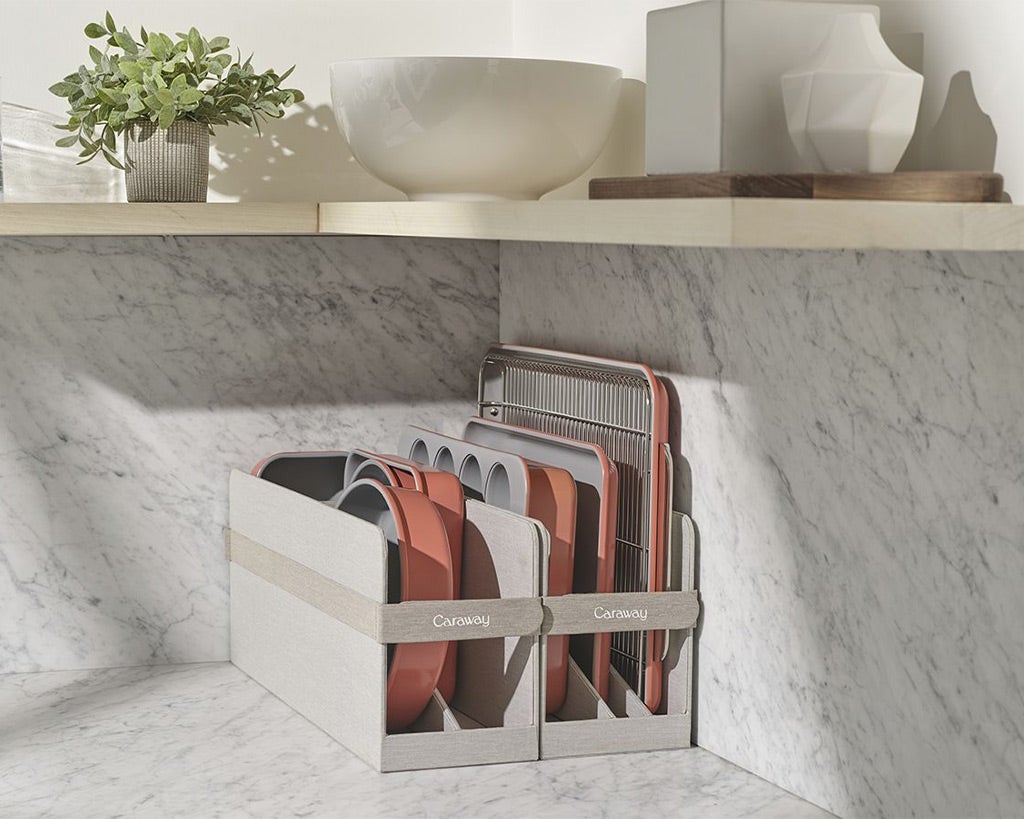 As we mentioned before, non-toxic cookware such as ceramic is safer than other types of cookware for many reasons.
As we mentioned before, non-toxic cookware such as ceramic is safer than other types of cookware for many reasons.
In general, if you have the option to avoid consuming toxic chemicals, you’d probably want to take it. Even if these chemicals don’t enter your body upon first use, they can build up over time, thus resulting in those health issues we discussed earlier.
At the end of the day, we all want to be able to enjoy the benefits of non-stick cookware without having to worry about those potential health issues down the line. It’s best to search for non-toxic, non-stick cookware, especially ones that are free of PTFE, PFOA, and PFAS.
The quality of ceramic cookware is also significantly better than traditional non-stick cookware.
Traditional non-stick cookware has more flaws than just its toxic chemicals. Even though they say they’re non-stick, food sometimes ends up sticking. As we had said earlier, non-stick cookware can chip and flake into your food. Not only does this chipping further hamper the non-stick properties, but it also results in toxic chemicals being ingested. This is often caused by the inevitable excess scrubbing that occurs when the food sticks: it becomes a cycle.
Not only is ceramic cookware free of those toxic chemicals, but it also is less prone to chipping. Its non-stick properties are higher in quality, so you’re less likely to be stuck scraping excess food off of the pan at the end of the night. This makes both the cooking and cleaning process a breeze.
Caraway All the Way
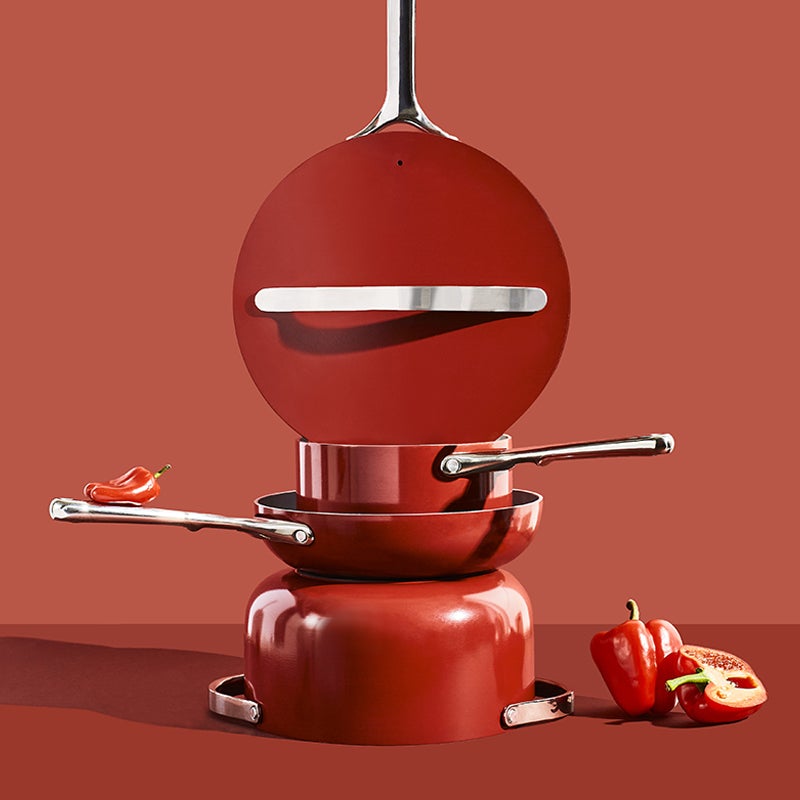 If you’re sold on non-toxic cookware, then our products are your next stop. We make shopping for non-toxic cookware a piece of cake with our Cookware Set, which holds the four essential cookware items: a Sauce Pan, a Sauté Pan, a Dutch Oven, and a Fry Pan.
If you’re sold on non-toxic cookware, then our products are your next stop. We make shopping for non-toxic cookware a piece of cake with our Cookware Set, which holds the four essential cookware items: a Sauce Pan, a Sauté Pan, a Dutch Oven, and a Fry Pan.
All of these products are made of ceramic and can ensure an easy cooking and clean-up process for you in multiple ways. Ceramic cookware provides a slick, frictionless surface that makes sure that food doesn’t stick to the pan while you cook. Therefore, when you clean your cookware, all you need to do is gently scrub with some soap and warm water, and you’ll be good to go.
Because of this, your cookware won’t chip very easily and is sure to last a long time. Of course, another common cause for the chipping of cookware is incorrect stacking.
Living busy lives can make haphazardly tossing cookware on top of each other in their cabinets a common bad habit. The issue with this is that when the cookware comes in contact with one another, they rub against each other, which can cause them to chip.
While this isn’t such a big issue with ceramic cookware since they are non-toxic, you want to do everything you can to ensure a long life for your cookware. At the end (and beginning) of the day, organization is key.
Our Cookware Set comes with free storage units for your new cookware, including a Magnetic Pan Rack and a Canvas Lid Holder. With these products, your cookware can rest in one location in your kitchen for easy and convenient access, all without them even coming in direct contact with each other.
Ceramic: The Safe Set
At Caraway, we believe in healthy cookware and healthy communication. Contact us at any time for advice on which color Cookware Set is right for your kitchen or to get the full reports on the chemical makeup of our cookware.
Ceramic cookware isn’t just a kitchen essential; it’s part of healthy living, clean eating, and an intentional center to your home.
Sources: Perfluorooctanoic Acid (PFOA), Teflon, and Related Chemicals | American Cancer Society 22 Stunning Small-Kitchen Decorating Ideas | Better Homes & Gardens What is ceramic cookware - and do you need it? | SFGate
